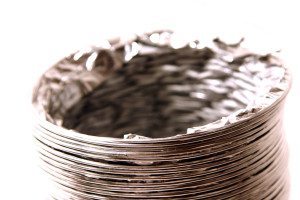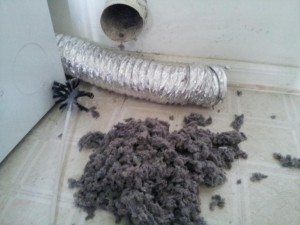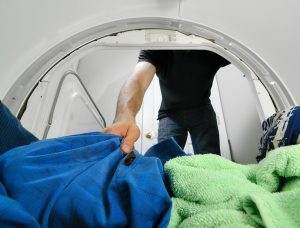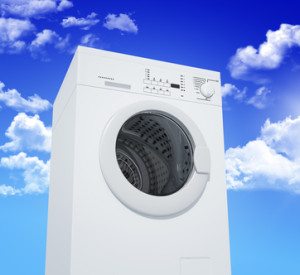If you haven’t done a thorough dryer vent cleaning in a while, it’s high time. It’s important to keep your dryer lint-free for many reasons, not the least of which are safety and cost savings.  The process is fairly simple, requiring only a little time and some basic supplies. If you don’t feel comfortable undertaking this project as a DIY endeavor, an appliance repair technician can help get your dryer in tip-top shape and ready to take on the summer’s volume of dirty laundry.
The process is fairly simple, requiring only a little time and some basic supplies. If you don’t feel comfortable undertaking this project as a DIY endeavor, an appliance repair technician can help get your dryer in tip-top shape and ready to take on the summer’s volume of dirty laundry.
Reasons Cleaning Dryer Vents Is Important
The most important reason for keeping your dryer’s vent and lint collection system clean is safety. Each year, families around the country experience devastating house fires that ignite from dryer lint buildup. In fact, the National Fire Prevention Association reports that from 2006 to 2010, an average of 15,520 house fires occurred each year that were directly related to clothes dryers, resulting in 29 deaths and $192 million in property damage.
When lint builds up, air flow becomes restricted. As a result, exhaust backs up and combusts, resulting in fire. Even if a fire doesn’t break out, the dryer’s operation becomes compromised, using more energy and increasing wear and tear on the dryer’s mechanical components. Clothes are exposed to higher heat for longer periods, wearing them out much more quickly.
Tools You’ll Need to Clean the Vent
One of the most helpful tools you can have around the house is a long, flexible brush designed to clean refrigerator coils and dryer vents. Although some only have bristles at the end, the best ones have bristles that run the length of the brush. To remove the vent hose, you may need a screwdriver or other household tools to loosen the vent cover and the hose clamp. A full-size or hand-held vacuum cleaner or shop vac with a crevice tool is a must-have, but you can also easily fabricate an effective dryer-cleaning device with a length of rubber tubing inserted into the vacuum wand (attach the tube with a rubber glove with a small hole in it to maintain vacuum pressure). If your dryer vents up through the roof, you can purchase a tool at the hardware store that resembles a loofah sponge on a long pole that is designed for this purpose.
How to Clean Your Dryer Vent
Unplug the dryer and pull it out from the wall, to allow easy access to the back. Start inside by removing the lint screen and vacuum it thoroughly. Insert the vacuum extension or rubber tube in and remove as much lint as possible, then run the brush down several times. Pull the dryer out and disconnect the vent. Vacuum inside the vent and inside the dryer opening. Go outside and remove the vent louver and vacuum as far in as possible. Replace the hose and push the dryer back into place. Check the hose for wear or holes and replace as necessary, but at least every two years.
To ensure a complete cleaning, contact Complete Appliance Repair in Salt Lake City. Their trained professionals can take your dryer apart and give it a more thorough cleaning than you can accomplish yourself, then inspect the machine for safety and proper operation. Regular maintenance service by a professional technician is the most effective way to ensure your family’s safety and the safe operation of your dryer. Don’t take chances. Make sure your dryer vent cleaning is done regularly.


 almost always be prevented with regular cleaning, and by replacing old vents with newer models on a regular basis. Here is a look at what you need to know to keep your dryer vent clean and your home safe from a fire hazard.
almost always be prevented with regular cleaning, and by replacing old vents with newer models on a regular basis. Here is a look at what you need to know to keep your dryer vent clean and your home safe from a fire hazard. remaining logical choices for softening your laundry. The keys to the debate, however, are the other benefits that come from these fabric softener choices. Read on for a quick comparison of fabric-softener sheets and dryer balls and decide for yourself.
remaining logical choices for softening your laundry. The keys to the debate, however, are the other benefits that come from these fabric softener choices. Read on for a quick comparison of fabric-softener sheets and dryer balls and decide for yourself. clothing and of the appliance itself. Effective clothes-washing products and techniques will help improve your drying results too, as will taking a few simple precautions. Read on for tips and tricks for better laundry results.
clothing and of the appliance itself. Effective clothes-washing products and techniques will help improve your drying results too, as will taking a few simple precautions. Read on for tips and tricks for better laundry results.